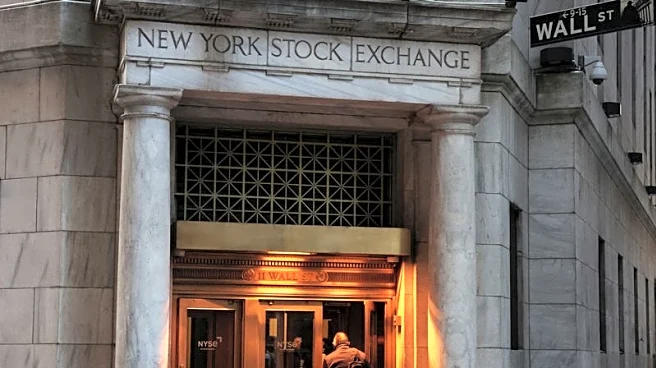What's Happening?
On September 25, 2025, stocks fell and bond yields rose as strong economic data tempered expectations for further interest rate cuts by the Federal Reserve. The U.S. economy grew faster than previously thought in the second quarter, with GDP increasing at an annualized rate of 3.8%. Additionally, new orders for key U.S.-manufactured capital goods increased unexpectedly, suggesting moderate growth in business spending. The Labor Department reported a decrease in unemployment claims, further complicating the outlook for rate cuts. Fed officials expressed caution about further easing, citing inflation concerns.
Why It's Important?
The stronger-than-expected economic data has raised concerns that the Federal Reserve may be more cautious in cutting interest rates, impacting market sentiment. Rising bond yields reflect investor uncertainty about the Fed's future actions, as higher yields can lead to increased borrowing costs. The data suggests a resilient economy, which could lead the Fed to slow its pace of rate cuts, affecting equity markets that have been buoyed by expectations of monetary easing. The situation underscores the delicate balance the Fed must maintain between supporting growth and controlling inflation.
What's Next?
Investors are closely watching upcoming economic data releases, including the Personal Consumption Expenditures index, which could influence the Fed's decision-making process. The potential for a government shutdown adds to the uncertainty, as it could disrupt critical data releases. Analysts are monitoring the Fed's messaging for clues about future rate cuts, as any changes could significantly impact market dynamics.
Beyond the Headlines
The recent economic data highlights the complexity of the current economic environment, where strong growth indicators coexist with inflation concerns. The Fed's cautious approach reflects the challenges of navigating these dynamics, as it seeks to balance growth and inflation. The situation underscores the importance of clear communication from the Fed to manage market expectations.











